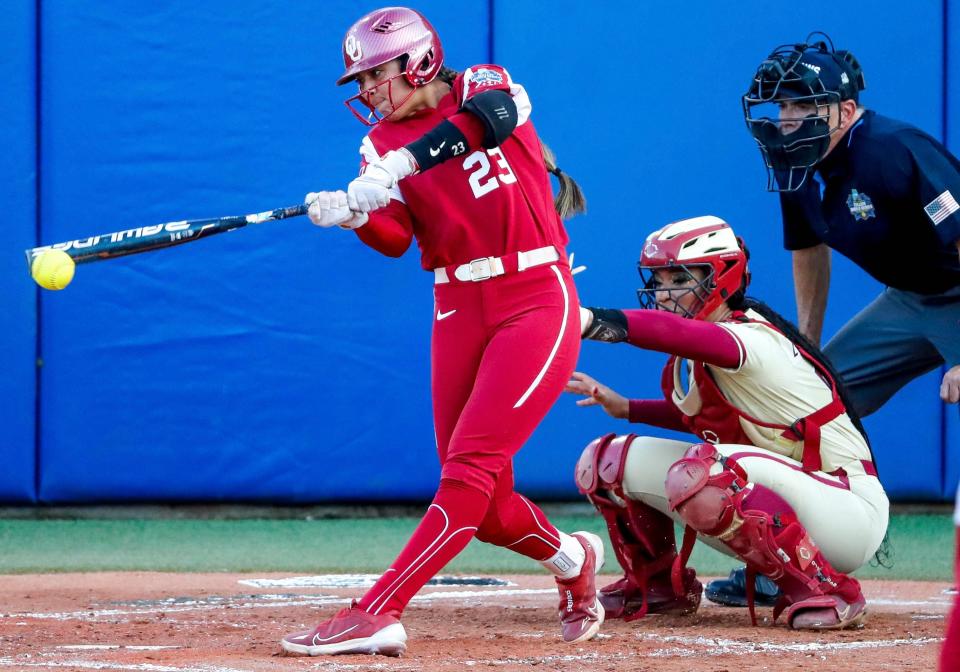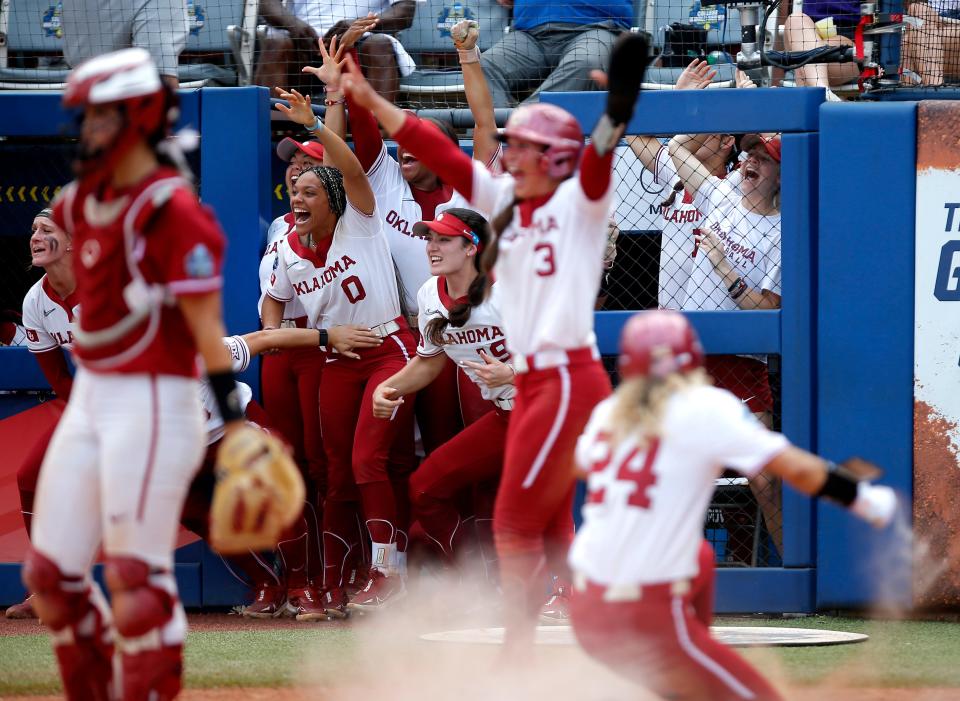'Can’t just be all muscles': How OU softball uses technology to rule the sport
NORMAN — Exit velocity and launch angle weren’t part of Tiare Jennings’ normal vocabulary before she arrived at OU ahead of the 2021 season.
But one of the first things Jennings did as a Sooners’ softball player was undergo testing with Rapsodo’s analytics system that shows data like exit velocity and launch angle.
“I didn’t really know too much (about it),” Jennings told The Oklahoman recently. “As I’m getting older, I see the data behind it and how much as a hitter (it helps). My freshman year, I kind of just went with it and went with the flow. Exit velo? I never really thought about it but I was like, ‘Yeah, I think I just swing harder, right? That’s how I get exit velo.’ But no, you need the launch angle and you need the spin rate. There’s mechanics.”
Jennings has helped OU to back-to-back-to-back national championships, and Jennings and the Sooners credit Rapsodo with playing a significant role in their performance.
“I’ve noticed when I use it on a consistent basis, that’s when I get the most measurements and the data that helps me as a hitter,” Jennings said. “Even in the summers, I’ll go back home and use it back with my travel ball coach.”
More: OU softball great Fale Aviu joins Sooners' coaching staff after stint at North Carolina

Rapsodo began as a golf-swing analytics company before expanding to baseball and softball.
OU currently uses both the hitting and pitching 2.0 systems, which features one camera and one radar.
“We’re optical and radar based,” said Kristen Drage, Rapsodo’s product manager for diamond sports. “So we’re able to give all of the ball-flight information as far as spin rate, exit velocity, launch angle, distance — basically everything that it’s doing. Then on the pitching side, the horizontal and vertical break, the efficiency of the pitch.
“So pretty much anything you can measure as far as while the ball is in the air, that’s what we can give.”
The company has a pro 3.0 unity used by Major League Baseball teams that have three cameras and two radars, adding more depth and a faster procession time.
During practices, OU uses both the pitching and hitting units together in tandem to provide numbers in real time.
“Using it for live pitching is my favorite way to use it,” Jennings said. “Just seeing the pitcher and the speed of the pitcher and the spin of the pitcher on the Rapsodo, I can just have someone holding the iPad on deck and I can just go back and look.”
Jennings said it took some time to find the right combination of exit velocity and launch angle to get the best results.
“I would say we were aiming for 70s, 80s range on exit velo,” Jennings said. “We noticed that when we started to try to swing harder, obviously the launch angle went down so we were hitting a lot more hard ground balls.”
More: OU softball: Tracking Sooners' arrivals, departures via transfer portal in 2023 offseason

Jennings said Kinzie Hansen and Haley Lee often came out ahead in practice competitions using the Rapsodo data.
“We just realized that in order to have a good exit velo, we need a good spin rate on the ball and a good launch angle,” Jennings said. “It can’t just be all muscles and just trying to swing our hardest.”
Swing and pitch analytics are trickling down to the smaller college and high school ranks and even below.
Rapsodo’s 2.0 products start around $3,000 plus a membership of $1,500, though Rapsodo officials said they will work with programs wanting to add the technology, specifically mentioning a program to help high school programs add the product.
Jennings hopes at some point she can also get that data points during games.
“I think that’s the next step for softball is in-game data,” Drage said. “We know everything that’s going on in practice right now and we’ve got a pretty good understanding of that, and now we want to see how that correlates in-game.”
Not only could that data benefit players during the game, it could also help add understanding for fans watching the broadcasts, much like has happened for baseball broadcasts at the MLB level.
“Absolutely, I think it would help huge-time with the growth of the game,” Jennings said.
“You see it so much in baseball with just how much technology they have. I just think that as the game’s growing, as we’re getting 1.9 million viewers in the (Women’s College) World Series, just how much that can grow not only Rapsodo but just the game of softball and how much better it can be with more technology.”
More: Is the 2023 OU softball team the best in NCAA history? Patty Gasso's Sooners have strong case
This article originally appeared on Oklahoman: OU softball: How technology has helped make the Sooners a power

